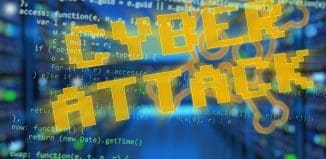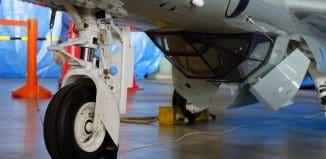Bringing computing power into the lives of everyone
This post is also available in:  עברית (Hebrew)
עברית (Hebrew)
 Last year, millions of viewers around the world held their breath for several minutes while NASA’s Curiosity rover made its final landing on Mars. But it’s safe to say Wind River’s engineers held it specifically tight, since it was their software running the whole operation. The company, making embedded Operating Systems and software, has become a world leader in the field, controlling about 45% of the market and operating hundreds of highly-critical applications, including dozens of air- and spacecraft.
Last year, millions of viewers around the world held their breath for several minutes while NASA’s Curiosity rover made its final landing on Mars. But it’s safe to say Wind River’s engineers held it specifically tight, since it was their software running the whole operation. The company, making embedded Operating Systems and software, has become a world leader in the field, controlling about 45% of the market and operating hundreds of highly-critical applications, including dozens of air- and spacecraft.
The company has two main Operating Systems for embedded applications: VX-Works and Wind-River Linux. In an interview with i-HLS, two of the company’s senior executives – Senior Vice President Craig Lewis and Senior Director, Vertical Marketing Joe (Joseph) Wlad – say these applications include the Boeing 787, Northrop Grumman’s X-47b UAV designed for the U.S Navy and various unnamed Israeli systems made by Elbit, ITT and others.
“Only in the last 5 years we started referring to security issues”, says Wlad. In 1999, he remembers, costumers in the aviation field asked the company for proof that its systems can meet the necessary safety instructions. That’s when VX-Works was created. “One of our first customers was a helicopter maker in Israel. It was our first highly-critical project”. Since then, he continues, the company has designed many embedded software for over 200 customers, including ones that had the ability to safely run many programs on the same computer. “The Blue Screen of Death (BSoD) is unacceptable in our line of work”, he says, referring to Microsoft’s famous crash message system.
The next stage, which came in the last few years, was security. MILS (originally “Multiple Levels of Security) is a system created by Wind River in order to address demand for highly secure applications. This system can run multiple programs separately, by applying space- and time-division – giving each program its own virtual memory and “turn” to use system resources.
Another application developed by the company is SIMICS, announced a few days ago as the business’ only hardware simulation system. Lewis says it was already used in a few cases, including initial testing for NASA’s James Webb Space Telescope.
Today, say the executives, embedded systems are everywhere, including cars, airplanes, M2M (Machine to Machine) applications and many others. Thus, it is extremely important to provide solutions that can deliver actionable information to the right people at the right time on one hand, without making the systems prone to bugs and hacker attacks. One such field is Mobile, where smartphones and tablets are making company information more available on one hand, but more exposed on the other.
In addition, sometimes even when the information is there, it can be useless if it’s not delivered in a timely manner. As an example, Wlad mentions the Boston Marathon bombing two weeks ago. The U.S government had information about the terrorists, he says, but the link between this past information to the present wasn’t there. The same thing, he claims, happens in Iraq, where information is transferred between different computer systems by humans who copy the information from one computer to another.
Wind River was founded in Berkley, California in 1981 by Jerry Fiddler and David Wilner. In 2009, computer chip maker Intel bought the company in a deal reportedly worth close to 900 million Dollars. “We are fully owned by Intel, but keep our identity, and most importantly – our independence”, says Lewis. He adds that even though sometimes there are orders coming from Intel, “we do work with Intel’s competitors, and on the other hand get a full access to Intel technology in order to integrate software and hardware”. The company’s R&D budget in 2012 was about 90 million Dollars.
i-HLS ISRAEL Homeland Security
Israel, according to Wind River, is important to the company because of its entrepreneurship, not only its frequent use of the company’s technologies in the military field. “Israel is the only place competing with Silicon Valley on entrepreneurship and innovation”, says Lewis. “Recently, we had a problem with one of our products, which our engineers could not solve. The managers said: if our engineers can’t cope with this, let’s give it to the Israelis. They get things done”.

When asked about buying Israeli companies, Tomer Bogin, Director of Middle East Sales and CEO of Wind River Israel, says the company doesn’t believe in buying companies as much as buying technologies. “We have bought companies in the past, but we have no specific strategy for buying Israeli start-ups”. On the other hand, he points out, Wind River can buy and integrate companies all around the world easily, since “we are not a centralized company. We have offices all around the world and have no problem with adding new ‘satellite-offices’. We don’t care about geography”.




























